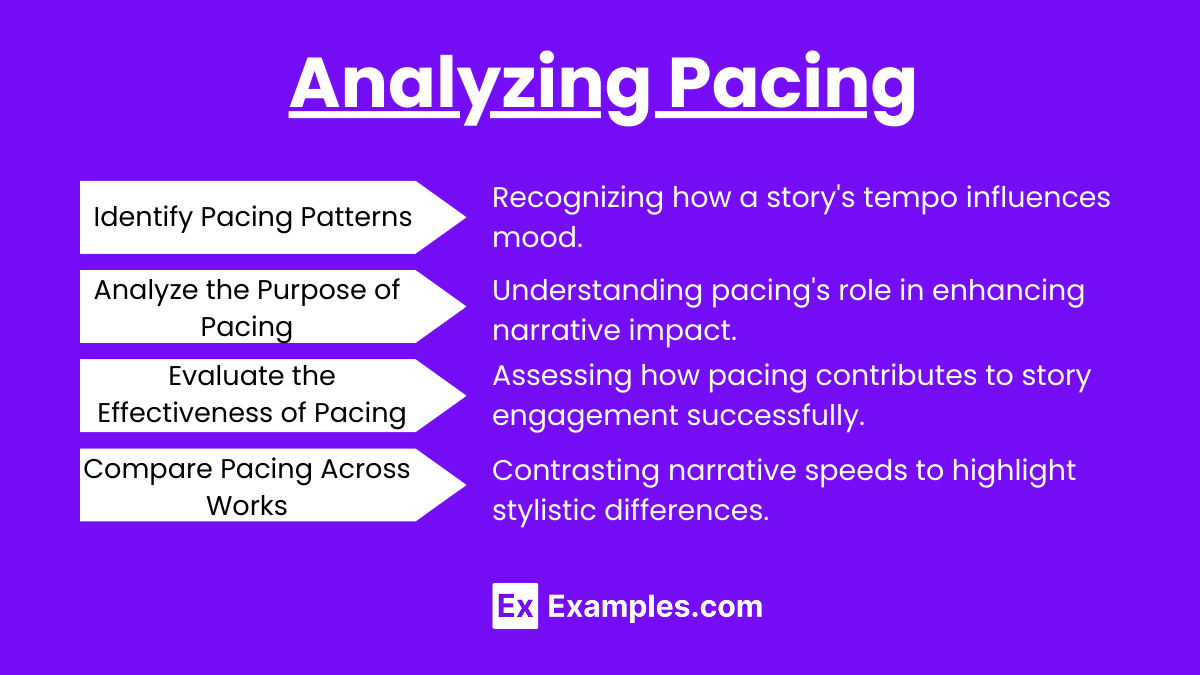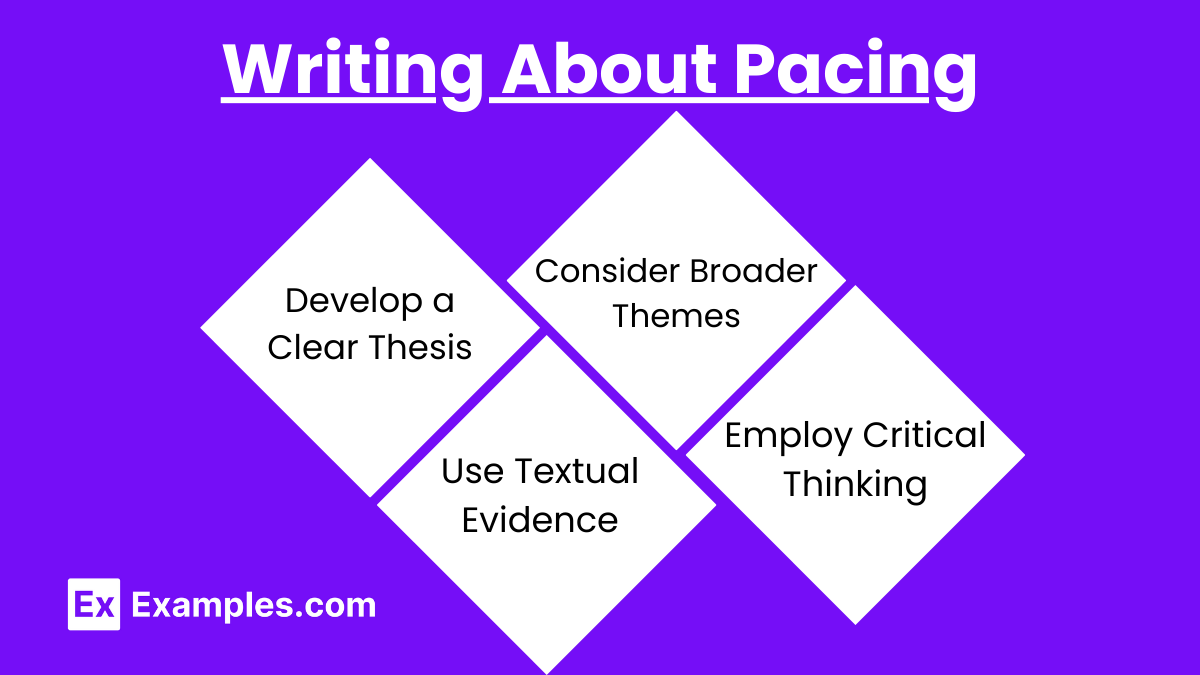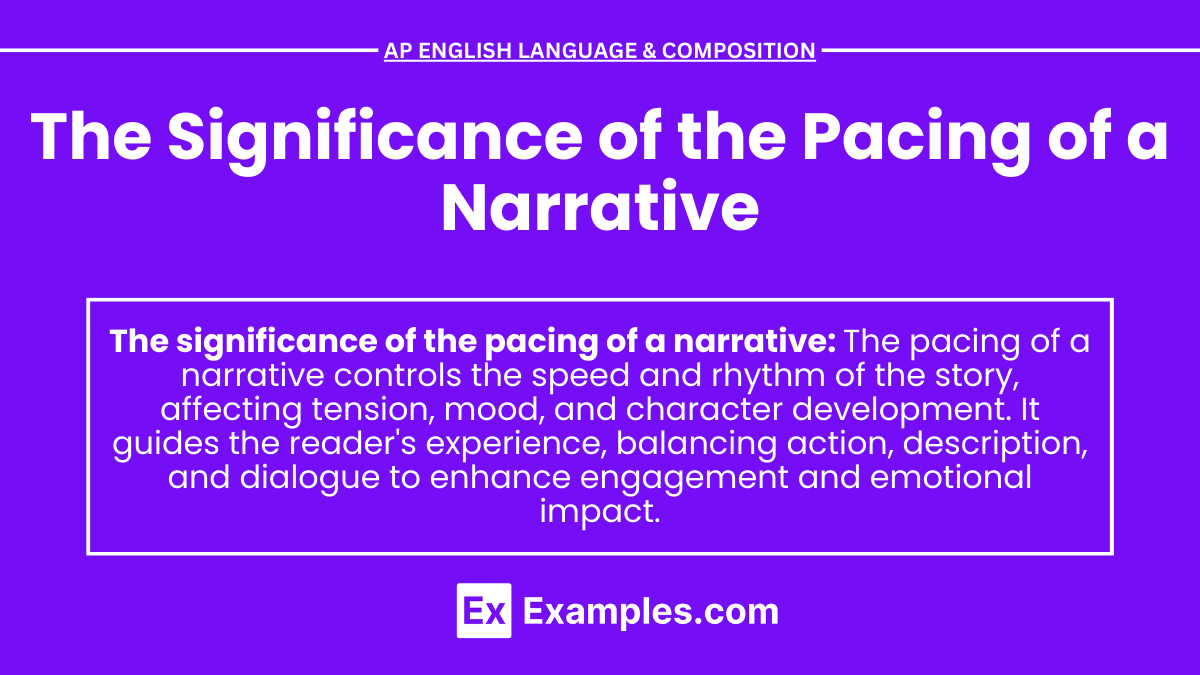In AP English Language and Composition, understanding the significance of the pacing of a narrative is essential. Crafting rhetorical sentences and cumulative sentences helps analyze how authors control the story’s flow. Effective pacing influences argumentative speech and argumentative writing, shaping mood, tension, and reader engagement, thereby enriching literary analysis and interpretation.
Learning Objectives
The learning objectives for analyzing the significance of the pacing of a narrative include mastering the use of cumulative sentences to build detailed analyses, crafting explanatory essays and expository essays to elucidate pacing techniques, constructing rhetorical sentences for persuasive arguments, formulating a final thesis statement that encapsulates your analysis, and applying critical thinking to explore the impact of pacing on narrative development and reader engagement.
Key Concepts and Techniques
- Definition of Pacing
- Pacing refers to the speed at which a narrative unfolds.
- It is controlled by the length of scenes, the amount of detail, and the frequency of action or dialogue.
- Types of Pacing
- Fast Pacing: Creates a sense of urgency and excitement. Often used in action scenes, climax, and moments of high tension.
- Slow Pacing: Allows for detailed descriptions, introspection, and the development of atmosphere. Often used in character development and scene-setting.
- Techniques for Controlling Pacing
- Sentence Structure: Short, choppy sentences can speed up the pace, while long, complex sentences can slow it down.
- Dialogue: Rapid-fire dialogue can quicken the pace, while extensive dialogue with interruptions can slow it.
- Description and Detail: Detailed descriptions can slow the pace, while minimal descriptions can quicken it.
- Action: Frequent action scenes can increase the pace, while a focus on internal monologue can decrease it.
- Scene Length: Short scenes can increase the pace, while longer scenes can decrease it.
- Transitions: Quick transitions between scenes or chapters can speed up the narrative, while gradual transitions can slow it down.
- Functions of Pacing
- Building Tension and Suspense: Fast pacing can create a sense of urgency and suspense, keeping readers on edge.
- Developing Characters and Themes: Slow pacing allows for deeper exploration of characters and themes, providing time for reflection and development.
- Creating Mood and Atmosphere: Pacing can establish the overall mood of the narrative, whether it’s fast-paced and thrilling or slow and contemplative.
- Controlling Reader Engagement: Effective pacing keeps readers engaged, ensuring the narrative maintains a balance between action and reflection.
Analyzing Pacing

- Identify Pacing Patterns
- Examine the structure of the narrative to identify patterns in pacing.
- Note sections where the pace quickens or slows down and the techniques used.
- Analyze the Purpose of Pacing
- Determine why the author chose a particular pace for different parts of the narrative.
- Consider how pacing contributes to character development, plot progression, and thematic emphasis.
- Evaluate the Effectiveness of Pacing
- Assess how well the pacing serves the overall narrative.
- Consider whether the pacing enhances or detracts from the reader’s experience and engagement.
- Compare Pacing Across Works
- Compare how different authors use pacing in various works.
- Analyze similarities and differences in pacing techniques and their effects.
Writing About Pacing

- Develop a Clear Thesis
- Formulate a thesis statement that encapsulates your argument about the significance of pacing in the narrative.
- Ensure it addresses the purpose, techniques, and effects of pacing.
- Use Textual Evidence
- Support your analysis with quotations and examples from the text.
- Explain how specific passages illustrate the pacing and its impact.
- Consider Broader Themes
- Relate the pacing to the broader themes and messages of the work.
- Analyze how the pacing contributes to the overall impact of the story.
- Employ Critical Thinking
- Engage in critical thinking to explore the deeper significance of pacing.
- Consider multiple perspectives and interpretations.
Practical Examples
- Fast Pacing
- “The Hunger Games” by Suzanne Collins: The fast pacing during the action scenes creates a sense of urgency and excitement, keeping readers engaged.
- “The Da Vinci Code” by Dan Brown: Rapid pacing and short chapters maintain suspense and propel the narrative forward quickly.
- Slow Pacing
- “To Kill a Mockingbird” by Harper Lee: Slow pacing allows for deep character development and exploration of themes such as racial injustice and moral growth.
- “Pride and Prejudice” by Jane Austen: Detailed descriptions and introspective moments create a leisurely pace, allowing for thorough character exploration and social commentary.


